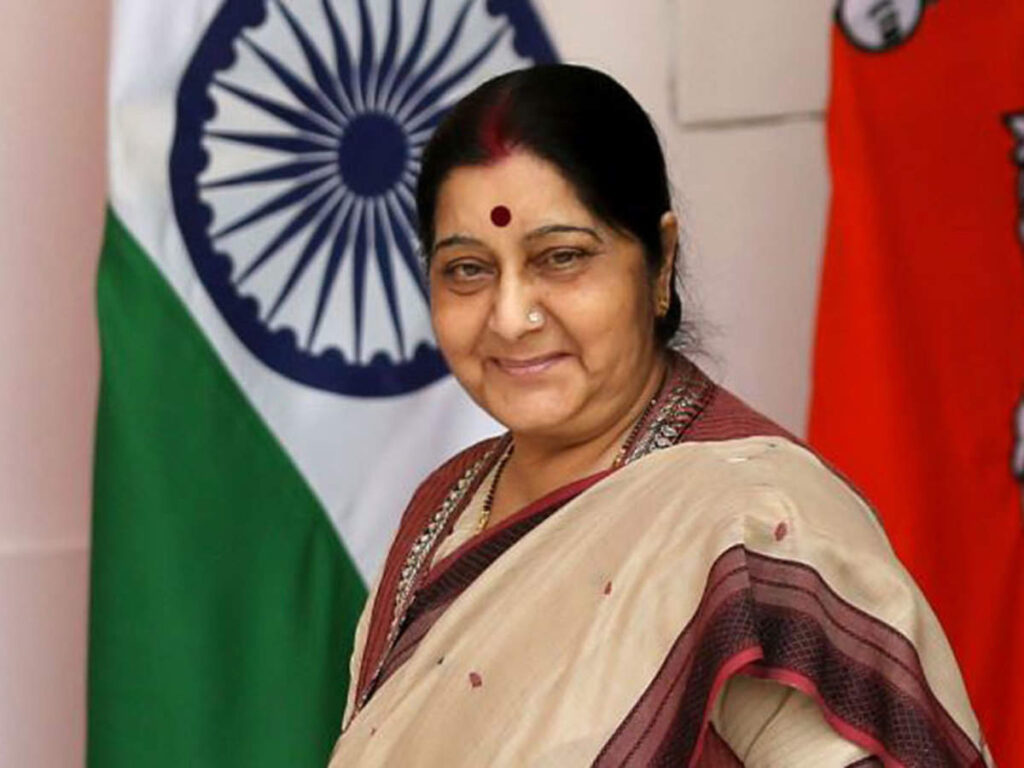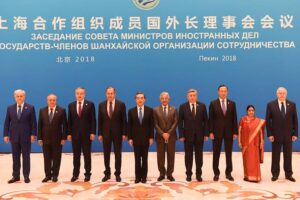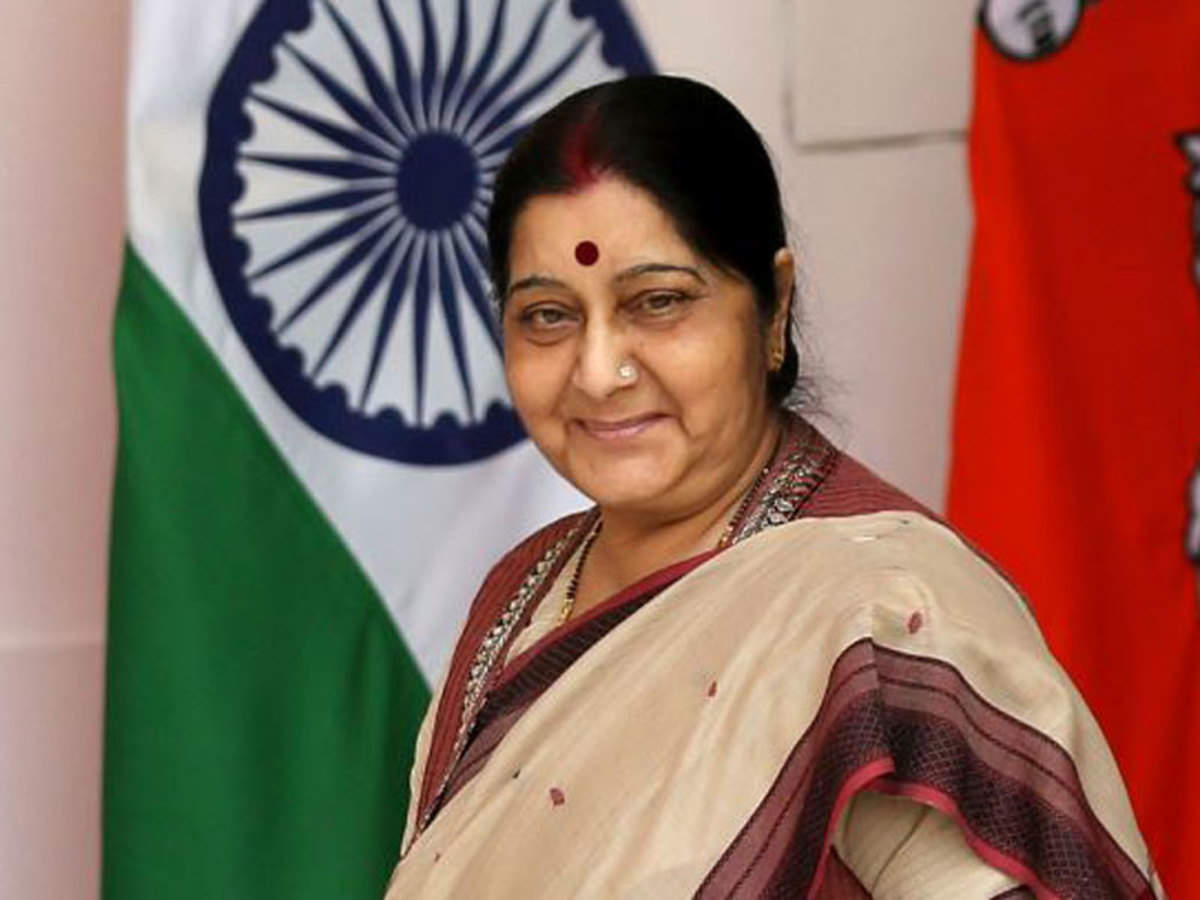
Today marks the one-year anniversary of Smt. Sushma Swaraj’s untimely death. Here’s a look at her life, her achievements and struggles as one of the few women politicians at the top.
Early Life
Born on the 14th of February, 1952 to Sh. Hardev Sharma and Smt. Lakshmi Devi, Sushma Sharma had a rather ordinary childhood in Ambala, Haryana. Always a keen debater and an excellent student, politics came naturally to Sushma Sharma. Fiercely competitive in every endeavour, she was adjudged the best NCC (National Cadet Corps) cadet for three years in a row at her graduate college in Ambala. Her command on Hindi was impeccable, and it showed. She won the title of ‘Best Hindi Speaker’ three years in a row at a state-level Hindi language competition organised by the Government of Haryana.
Academic Career
After securing a Bachelor’s degree in Sanskrit and Political Science in Ambala, Sharma moved to Chandigarh to attend Panjab University. She pursued a degree in law there. It was at Panjab University where the budding politician in Sushma Sharma took action. She was a member of the Akhil Bharatiya Vidyarthi Parishad (ABVP), the Bharatiya Janata Party’s (BJP) youth wing. Soon after, she took up an advocate position at the Supreme Court of India, New Delhi.
Emergency (1975-1977)
The emergency had now begun. It was perhaps the darkest time for Indian Democracy. Political leaders who spoke against the regime at the time were jailed without trial. In such a tumultuous time, Sushma Sharma and Swaraj Kaushal (who would go on to marry Sushma), represented George Fernandes in his fight against the totalitarian government at the time.
After the Emergency had ceased, Sushma Swaraj was elected to the Haryana Legislative Assembly of 1977 at the age of 25, representing the Ambala Cantonment assembly seat. She was sworn into the Haryana Cabinet Ministry in 1977, as the Minister of Labour and Employment. In 1990, she was elected to the Rajya Sabha. She won the 11th Lok Sabha elections in 1996 from the South Delhi constituency. A short-lived stint as Chief Minister of Delhi in 1998 followed. She was also, incidentally the first woman to lead the Delhi state government.
Work as Union Minister
Swaraj began her stint at the Central Government in the 13-day coalition government under Prime Minister Vajpayee in 1996. She served as the Union Minister for Information & Broadcasting and managed to bring about significant changes in her short tenure as Minister. She began televising the Parliament sessions on Doordarshan, giving the average citizen an insight into how his elected representatives work. This move allowed us to witness some of the most famous speeches in the history of our democracy. All this in just 13 days!
Under the second Vajpayee-led government, she was sworn in as the Minister of I&B with an additional charge of the Ministry of Telecommunications. Her most significant achievement in this tenure was declaring the film production as an industry—resulting in the official birth fo the Indian film industry. This move allowed producers to avail loans from banks and other financial institutions, changing the industry and films produced. Smaller, independent filmmakers and producers began making movies that previously didn’t get funded—giving rise to a new genre of film that pushed the whole industry forward.
After contesting from the Congress bastion of Bellary in the 1999 elections, Sushma Swaraj lost to Smt. Sonia Gandhi by a sliver, a 7% margin to be precise. Despite having only twelve days to campaign, Swaraj addressed the crowd in Kannada, a language she learnt only for the election. She returned to the Parliament, becoming a Rajya Sabha MP from Uttarakhand. She served as the I&B Minister from 2000 to 2003 and was prominent in securing the rights of artists when it came to copyright issues. Following this, she served as the Minister of Health, Family Welfare and Parliamentary Affairs from January 2004 to May 2004 during which she set up eight All India Institutes of Medical Sciences (AIIMS) throughout the nation.
Sushma Swaraj rose to public praise and prominence during her tenure as the Minister of External Affairs under the first Modi government. She was the first woman to hold the position after late Prime Minister Smt Indira Gandhi. She steered India’s foreign policy towards a more aggressive stance. She played a crucial role in improving international relations with countries India previously did not have significant relationships with. She acted as India’s voice in international forums—especially when it came to addressing Indo-Pak and Sino-India issues. Her fast-track diplomacy and “Look East” policy helped establish diplomatic ties with ASEAN and Middle-Eastern countries.
Impact on Politics

Dressed in a smart Sari and her trademark Bindi, Swaraj stood out amongst all Ministers of Foreign Relations from other countries. Hailed as “India’s super-mom”, her active presence on social media received praise from the old and young. Indians in distress from all around the world used Twitter as a medium to seek her help, and she was famous for ensuring these problems got resolved. She became popularly known as the “Millennial Minister” when she jokingly promised a Twitter user that even if they were stuck on Mars, the Indian Embassy there would help them. She is responsible for streamlining the passport application process and set up 400 passport centres in just five years. She also spearheaded the justice for Kulbhushan Jadhav case, and also successfully brought back Gita—a 23-year-old speech and hearing-impaired woman who was stranded in Pakistan for 15 years. Her humanitarian touch was visible, and her tenure made the Foreign Ministry more accessible.
A fierce orator and a friendly minister, Sushma Swaraj was a politician with an old-world charm. Articulate, diplomatic and a woman who understood the intricacies of Indian politics—Smt Sushma Swaraj will be missed. She was one of the first women to play an active role in politics, shattering the glass ceiling for all Indian women. She was instrumental in bringing issues regarding women’s safety and progress to the forefront. Her politics were rooted in dignity and grace, maintaining great personal friendships with everyone across the political spectrum, including rivals. She took on challenging roles and made them her own. Indians all around the world will continue to remember her commitment to public service, exceptional oratory skills and the warm smile that left an indelible mark on our politics.
Even if you are stuck on the Mars (sic), Indian Embassy there will help you. https://t.co/Smg1oXKZXD
— Sushma Swaraj (@SushmaSwaraj) June 8, 2017
Written by Siri Rajanahally and Avaneesh Jai Damaraju for MTTN
Featured Image sourced from Google Images

Leave a Reply
You must be logged in to post a comment.